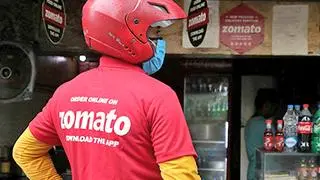Indian Oil Corporation’s ₹900-crore 2G ethanol plant, which was inaugurated by Prime Minister Modi in August 2022, is set to reach 100 per cent capacity utilisation in a few months from 30 per cent now, said IOC’s Chairman and Managing Director, Shrikant Madhav Vaidya.
In an interaction with the journalists of The Hindu Group of publications, Vaidya said the feedstock for the bioethanol plant — rice husk (parali) — is available for collection only for about 45 days, and will need to be stored for the entire year. The plant will need 150,000 tonnes of feedstock every year. The collection of the feedstock has begun now, and the plant, therefore, will reach full capacity shortly, he said.
Refiners like IOC are required to supply petrol that has 20 per cent (bio)ethanol by 2025. Vaidya said that in October, IOC’s blend was 12.5 per cent, which will be raised to 15 per cent next year, and then, gradually, to 20 per cent by 2025.
Also, part of the 2G ethanol will go to the production of SAF (sustainable aviation fuels), which is also coming up near the Panipat refinery, under a joint venture with Lanzajet, a subsidiary of Lanzatech in which IOC has a stake. The Carbon Offsetting and Reduction Scheme of International Aviation (CORSIA) of the International Civil Aviation Organisation has said that airlines will fly with 2 per cent SAF blends. IOC will be supplying fuels that comply with that decision, said Vaidya.
Stressing that “going green is no more an option but an imperative”, Vaidya said “today, I am supplying 9 per cent of the country’s energy — of all forms”. The number would go up to 12.5 per cent by 2045. The entire increase would come from green sources, he said.
green hydrogen
On green hydrogen, he said the joint venture with L&T and the renewable energy company, ReNew Energy, had been formed and “we will be bidding for projects”. In August, IOC invited bids for setting up a 10,000 tonnes-per-annum of green hydrogen capacity to be set up near its Panipat refinery. Vaidya said that the IOC-L&T-ReNew joint venture would participate in the bid. The JV would have to bid and win the project; it would not be handed the project just because IOC is a partner in the JV, he said.
Vaidya said that IOC would set up 500,000 tonnes-a-year of green hydrogen capacity by 2040. Asked whether green hydrogen would not be expensive, he said it would cost thrice as much as grey hydrogen (hydrogen produced through processes that have associated greenhouse gas emissions). However, one should not always look at economics, but do the right thing for the planet, he said.
Vaidya declined to answer any question about prices of petrol, diesel and LPG or about under-recoveries, saying that the subject was reserved for the boardroom.







Comments
Comments have to be in English, and in full sentences. They cannot be abusive or personal. Please abide by our community guidelines for posting your comments.
We have migrated to a new commenting platform. If you are already a registered user of TheHindu Businessline and logged in, you may continue to engage with our articles. If you do not have an account please register and login to post comments. Users can access their older comments by logging into their accounts on Vuukle.